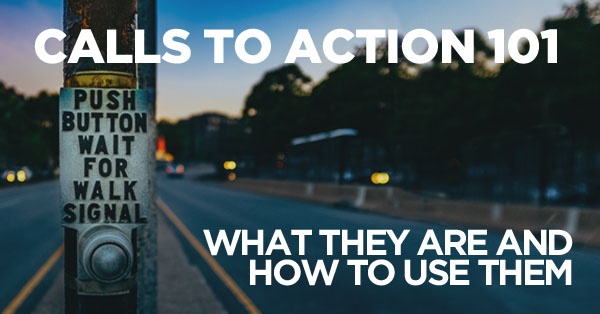
A visitor comes to your website, reads the copy on the page, doesn’t know what to do next, and leaves the site in search of something else. But what if you had a signal to let that visitor know what to do next?
That signal is called a call to action.
What is a call to action and why do you need one?
A “call to action” is literally a call (a command in the imperative) for someone to take an action, such as click a button or fill out a form. The phrase has gained popularity in the Internet age, as that’s what marketers call the buttons on websites and landing pages, but a call to action can take many forms, as you’ll see in the section. Calls to action are necessary on websites and promotional material to give the reader clear instructions on what to do next. Without a call to action leading to the next step down the funnel, a visitor or consumer would simply move on to reading something else. With a call to action in front of them, they are now presented a choice whether to read something else or continue to find out more information about your company. If your call to action is compelling, they’ll continue down the funnel, leading to a potential sale.
What types of calls to action are there?
Button
The most common type of call to action is the button. It can live by itself on a webpage, or after a sentence or two of explanation. A button also appears on forms that gate content offers.
Graphic
A sub-type of the button CTA is the graphic call to action. It uses an image—either a photograph or a representation of the offer—to entice viewers to click.
In-text
In-text calls to action can be used on print materials as well as websites. They are typically at the end of a paragraph, telling readers to call a brick-and-mortar location or to log on to the company’s website.
Pop Up
A pop up call to action allows for subscriptions and content offers to be offered without waiting for the reader to get to the end of the blog post or web page.
Where do you put one and where does it lead?
A call to action can be placed in various areas across a website. It can be placed at the end of a blog post, on a subscription page, at the end of a form, in the text of an email, in the header of the site, the list goes on and on. Be careful to not overwhelm your reader with calls to action—they’ll be tempted to go in too many directions at once, more than likely leading to them not selecting any call to action at all. Calls to action should lead to a separate landing page, specific to the action that needs to be taken. If the call to action was at the end of a blog post for an ebook, the button should lead to a landing page that only talks about the specific ebook and what the consumer can expect from the ebook; a form should be on the landing page, also a call to action, leaving the only option to fill out the form or return to the previous page.
How can you split test calls to action?
Just like any other element on a website, calls to action should go through A/B testing to continue to get the best engagement possible. While there are many ways to test calls to action, only one variable at a time should be tested. Enough time should also be given to the testing to make sure the test is accurate.
When testing, first decide which variable to test:
- Type – if you’re currently using a button, see if a pop up returns better results
- Color – if a button blends in with the color scheme of the site, try using a contrasting color that sticks out
- Size – is the CTA big enough to be noticed among the other materials on the page?
- Wording – if people are used to seeing “Click here” on your site and others, maybe it’s time to change it to something more exciting or adding social proof
- Placement – do people click on the buttons at the bottom of a blog, or would it help to move it up to the middle of the post?
Calls to action are invaluable in getting new leads and prospects from your website. They help lead visitors down the funnel and help returning customers find exactly what they’re looking for. Evaluate your website to see where to add calls to action and how to improve the exisiting ones.
Need help with adding a content marketing strategy to your efforts? Contact us today.
{{cta(‘b6183b24-a82a-47e7-b57c-cf515392d304’)}}
